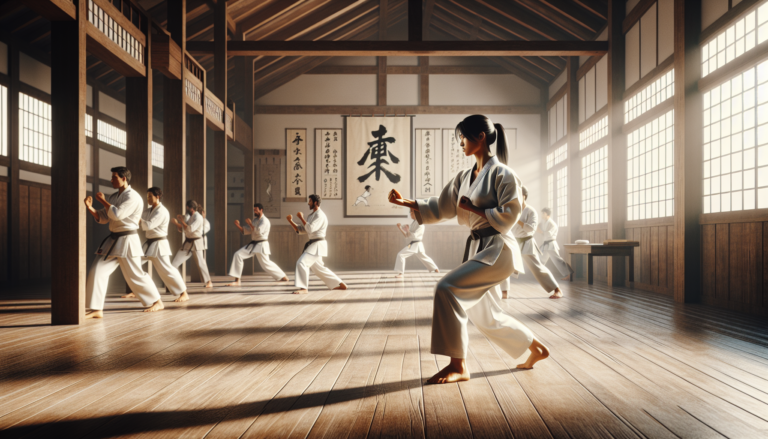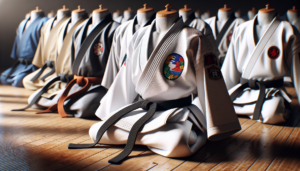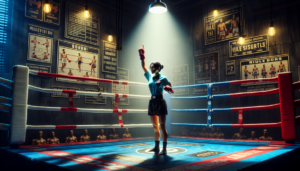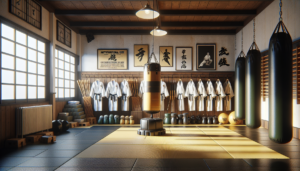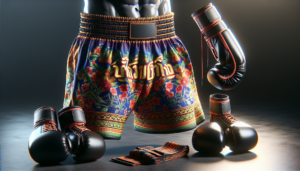Introduction to Shotokan Karate
Shotokan karate is one of the most popular and widely practiced styles of karate worldwide. Characterized by its linear movements, powerful techniques, and deep stances, Shotokan karate offers practitioners a comprehensive system for physical conditioning, self-defense, and personal development. This article will delve into the history, techniques, kata, and principles of Shotokan karate, providing a comprehensive guide for both beginners and experienced practitioners.
History and Origins of Shotokan Karate
Shotokan karate traces its roots back to Okinawa, Japan, where it was developed by Gichin Funakoshi in the early 20th century. Funakoshi, who is considered the father of modern karate, synthesized various Okinawan martial arts styles and incorporated elements of Chinese martial arts to create a unified system that emphasized simplicity, efficiency, and practicality. In 1922, Funakoshi introduced his style of karate to mainland Japan, where it quickly gained popularity and became known as Shotokan, named after Funakoshi’s pen name, “Shoto.”
Philosophy and Principles of Shotokan Karate
At the heart of Shotokan karate lies a set of guiding principles known as the dojo kun. These five principles—seek perfection of character, be faithful, endeavor, respect others, and refrain from violent behavior—serve as a moral compass for practitioners both inside and outside the dojo. Shotokan karate places a strong emphasis on self-improvement, discipline, and the pursuit of excellence, encouraging students to strive for personal growth and development through dedicated training and self-reflection.
Fundamental Techniques in Shotokan Karate
Kihon: The Basics of Shotokan Karate
The foundation of Shotokan karate lies in its basic techniques, known as kihon. These fundamental movements include stances, blocks, punches, and kicks, which are practiced repeatedly to develop proper form, power, and control. Some of the most essential kihon in Shotokan karate include:
- Zenkutsu dachi (front stance)
- Kokutsu dachi (back stance)
- Kiba dachi (horse stance)
- Gedan barai (downward block)
- Age uke (rising block)
- Gyaku zuki (reverse punch)
- Mae geri (front kick)
By mastering these basic techniques, practitioners lay the groundwork for more advanced training in kata and kumite.
Advanced Techniques and Combinations
As students progress in their Shotokan karate training, they begin to incorporate more advanced techniques and combinations into their practice. These may include:
- Mawashi geri (roundhouse kick)
- Yoko geri (side kick)
- Uraken uchi (back fist strike)
- Shuto uke (knife hand block)
- Nukite (spear hand strike)
- Kizami zuki (jab punch)
Combining these advanced techniques with the fundamental kihon allows practitioners to develop more complex and effective self-defense skills, as well as to express their individual style and creativity within the structured framework of Shotokan karate.
Understanding Kata in Shotokan Karate
What is Kata?
Kata are pre-arranged sequences of techniques that simulate combat against multiple opponents. In Shotokan karate, kata serve as a primary training tool, allowing practitioners to develop their technical proficiency, power, speed, balance, and rhythm. Each kata consists of a series of blocks, strikes, kicks, and stances, which are performed in a specific order and with precise timing and form.
Importance of Kata in Training
The practice of kata is essential to the overall development of a Shotokan karate practitioner. By repeatedly performing kata, students ingrain the proper form and techniques into their muscle memory, allowing them to execute these movements with greater speed, power, and precision. Kata also serve as a form of moving meditation, helping practitioners to develop focus, concentration, and mental discipline.
Popular Kata in Shotokan Karate
Shotokan karate features a wide range of kata, each with its own unique characteristics and challenges. Some of the most popular and widely practiced kata in Shotokan include:
- Heian (Peaceful Mind) series (Shodan, Nidan, Sandan, Yondan, Godan)
- Tekki (Iron Horse) series (Shodan, Nidan, Sandan)
- Bassai Dai (To Penetrate a Fortress)
- Kanku Dai (To Look to the Sky)
- Jion (Temple Sound)
- Enpi (Flight of the Swallow)
As practitioners advance in their training, they learn more complex and challenging kata, which test their physical and mental abilities and deepen their understanding of Shotokan karate.
Kumite: Sparring in Shotokan Karate
Types of Kumite: Gohon, Sanbon, and Ippon
Kumite, or sparring, is an essential aspect of Shotokan karate training that allows practitioners to apply their techniques against a live opponent. There are several types of kumite practiced in Shotokan, each with its own specific rules and objectives:
| Type | Description |
|---|---|
| Gohon Kumite | Five-step sparring, with the attacker executing five techniques and the defender blocking and counterattacking after each one. |
| Sanbon Kumite | Three-step sparring, similar to gohon kumite but with three techniques. |
| Ippon Kumite | One-step sparring, where the attacker executes a single technique and the defender responds with a block and counterattack. |
These structured forms of kumite allow practitioners to develop their timing, distance control, and reflexes in a controlled environment.
Benefits of Kumite in Training
Engaging in kumite offers numerous benefits to Shotokan karate practitioners:
- Develops practical self-defense skills
- Improves timing, distance control, and reflexes
- Builds confidence and mental resilience
- Enhances physical conditioning and cardiovascular fitness
- Promotes adaptability and problem-solving skills
By regularly participating in kumite, students learn to apply their techniques effectively, respond to unpredictable situations, and maintain composure under pressure.
Bunkai: Practical Application of Kata
Understanding Bunkai
Bunkai refers to the analysis and interpretation of the techniques contained within a kata, with a focus on their practical application in self-defense situations. By studying bunkai, practitioners gain a deeper understanding of the meaning behind each movement in a kata and learn how to adapt these techniques to real-world scenarios.
Bunkai in Self-Defense
Effective bunkai training enables Shotokan karate practitioners to develop practical self-defense skills that can be applied in a variety of situations. By breaking down the movements of a kata and exploring their potential applications, students learn to:
- Identify common attack scenarios
- Utilize appropriate defensive techniques
- Execute effective counterattacks
- Adapt techniques to various situations and opponents
Incorporating bunkai into regular training helps practitioners bridge the gap between the structured practice of kata and the dynamic reality of self-defense.
The Role of Meditation: Mokuso
Benefits of Mokuso in Training
Mokuso, or meditation, plays a crucial role in Shotokan karate training. Typically performed at the beginning and end of each class, mokuso helps practitioners:
- Develop mental focus and clarity
- Cultivate self-awareness and introspection
- Manage stress and emotions
- Enhance concentration and visualization skills
- Foster a sense of inner peace and harmony
By incorporating regular meditation practice into their training, Shotokan karate practitioners can improve their overall well-being and performance, both in the dojo and in their daily lives.
Finding the Right Dojo and Instructor
Qualities of a Good Karate Instructor
When seeking a Shotokan karate instructor, look for someone who:
- Possesses a deep understanding of Shotokan techniques and principles
- Demonstrates excellent teaching and communication skills
- Emphasizes safety and proper form in training
- Encourages personal growth and development
- Leads by example and embodies the values of the dojo kun
A skilled and dedicated instructor can make a significant difference in a student’s progress and overall experience in Shotokan karate.
Tips for Choosing a Dojo
When selecting a Shotokan karate dojo, consider the following factors:
- Instructor qualifications and experience
- Dojo atmosphere and cleanliness
- Class schedule and location
- Curriculum and training methods
- Student-teacher ratio and individual attention
It’s essential to find a dojo that aligns with your goals, learning style, and personal values to ensure a positive and rewarding training experience.
Integrating Other Martial Arts
Benefits of Cross-Training
While Shotokan karate offers a comprehensive system of self-defense and personal development, many practitioners find value in cross-training with other martial arts. Integrating techniques and principles from different styles can:
- Enhance overall martial arts proficiency
- Address potential weaknesses or gaps in Shotokan training
- Develop adaptability and versatility in self-defense situations
- Provide exposure to different training methods and philosophies
- Foster a broader understanding and appreciation of martial arts
Cross-training can help Shotokan karate practitioners become more well-rounded martial artists and expand their skill set.
Popular Martial Arts to Combine with Shotokan Karate
Some popular martial arts that complement Shotokan karate include:
| Martial Art | Key Benefits |
|---|---|
| Brazilian Jiu-Jitsu | Develops ground fighting and grappling skills |
| Boxing | Enhances hand speed, footwork, and head movement |
| Muay Thai | Improves clinch fighting, elbow and knee strikes |
| Aikido | Teaches joint locks, throws, and redirection of force |
| Judo | Develops throwing and grappling techniques |
By selectively incorporating elements from these and other martial arts, Shotokan karate practitioners can create a more comprehensive and effective self-defense skill set.
Conclusion
Shotokan karate offers a rich and rewarding path for those seeking to develop their physical, mental, and spiritual well-being. By mastering the fundamental techniques, kata, and principles of this traditional martial art, practitioners can cultivate a range of benefits, from improved self-defense skills to greater self-discipline and personal growth. Whether you are a beginner or an experienced martial artist, the journey of Shotokan karate provides endless opportunities for learning, self-discovery, and achievement. By embracing the challenges and rewards of this transformative practice, you can unlock your full potential and embody the timeless values of the dojo kun.

